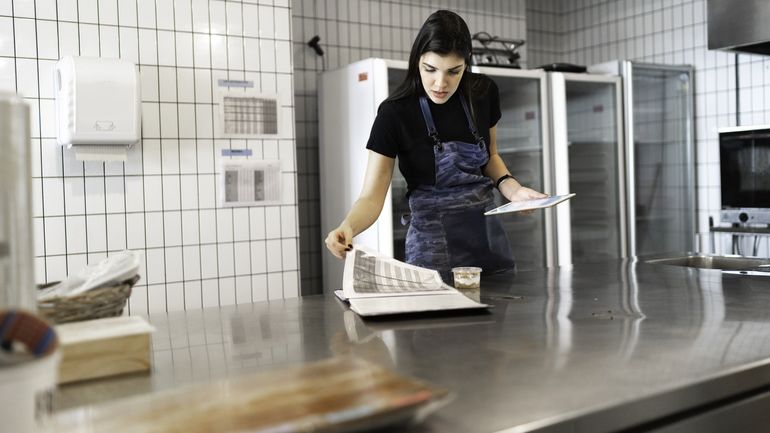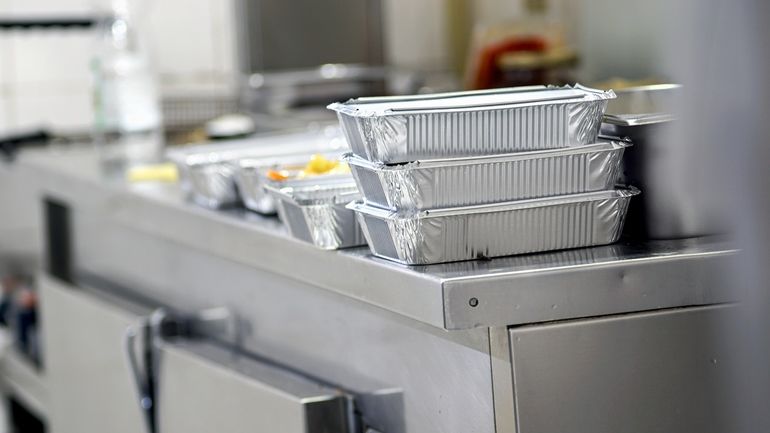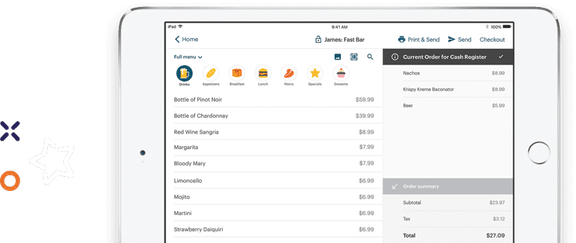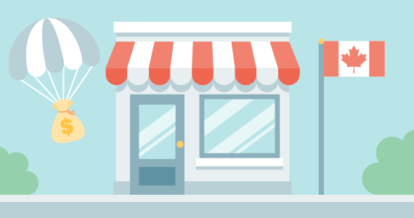Restaurant owners around the world are tightening their belts and holding their breath as COVID-19 continues to challenge the industry in unprecedented ways. Revenue generating options have been limited to mostly takeout and delivery, forcing many into restaurant cost-saving mode to remain open.
But with reduced – or stalled – revenue streams, how do you cut costs in order to free up cash and extend the runway for your business?
In this guide for restaurants that are staying open in some capacity, we’ll go over the best things you can do right now to save money, such as:
- Assess the damage
- Talk to your bank
- Limit your menu
- Inventory your goods and reduce food waste
- Set yourself up for online ordering
- Discover discounts
- Cut your hours of operation
- Work with a skeleton staff

Assess the Damage
A good first step for every restaurateur is to take a look at your operating costs. If you aren’t sure exactly what your business is spending money on, it’s time to find out – and check that pulse regularly.
You can’t set your business up for survival without a keen understanding of your current profit and loss (P&L) statement and seeing where every dollar is coming in and going out.
Also known as an income statement, statement of earnings, or statement of operations, this is a big-picture look at your business’ strengths and weaknesses. It reflects costs that are subtracted from your sales and gives you a clear look at what has happened in your restaurant over a period of time.
Now that you have a high level view of your financial outlook, dive into your POS software to get into more detail and identify:
- Which dishes are your best sellers
- Which ones are underperforming
- What is your revenue intake day by day, week over week, and what do those trends look like
Next, measure these results up against your minimum operating costs and do the math to understand how much runway you have before you have to shut down for good.
The picture may look grim right now and your sales will be poor compared to historical figures. The important thing here is to understand what the expected revenue is for the time being and compare that with the cost of goods sold (COGs) and your operating expenses.
Talk to Your Bank
If you’ve taken out loans to fund your business or are financing equipment through the bank (or other lender) and know that you may default on those payments, it’s time to talk to them and investigate what relief you may be eligible for.
The most common relief you could ask for right now are that all your principal and interest payments are deferred for at least the next two to six months and that all your existing operating lines of credit are maintained or limits increased.
For additional funding, many banks are giving restaurants access to financing with limited restrictions, in order to survive this time of uncertainty.
The Business Development Bank of Canada (BDC), as part of the newly-formed Business Credit Availability Program (BCAP), is set to offer about $65 billion in direct lending and other types of financial support to businesses across the country. Applications are now open through your financial institutions.
In the U.S., under the CARES Act, the U.S. Small Business Administration (SBA) will fund small business loans to help you make payroll and weather the COVID-19 pandemic. You can apply for a loan through TouchBistro’s lending marketplace partner, Lendio, which has loan options from over 75 lenders. (Already a TouchBistro customer? Apply here.)
Once you’ve assessed the financial situation based on your POS data and you have a clear picture of how much runway your business has, the next step is to have a very honest conversation with your lenders and see where you could get some relief. You should also have a conversation with your accountant to discuss different strategies you can use to optimize cash flow when filing your restaurant taxes.
Limit Your Menu
Your POS review will help you identify which dishes are your top performers and which ones may need to go on the back burner for now. This will boil down to popularity, profitability, and accessibility of ingredients.
Take a look at all your menu items and categorize them into the following:
- Stars: Very popular and highly profitable dishes.
- Plough-horses: Also popular but have low profitability.
- Puzzles: Highly profitable but not very popular.
- Dogs: Not very popular or profitable.
Your most popular dishes – your stars and plough-horses – are must haves in order to keep traffic flowing to your restaurant website. These are the dishes that are keeping you top of mind with your guests.
Puzzles might remain on the menu because they bring in a higher profit. If the accessibility or cost of the ingredients to make is prohibitive, then don’t include them in your reduced menu. The dishes in the dog category can be shelved for the time being because they’re not serving you.
By limiting the menu, you reduce prep time and the resources needed to create them. You also help your guests make quicker decisions when ordering because having too much choice on a menu may actually reduce decision making by customers.
Many restaurants are adapting their menus in unique ways, so you’re in good company. For example, the Pittsburgh-based restaurant Acorn recently created a limited menu of to-go dishes that are easy to prepare, like sandwiches and mac and cheese, versus fussier and complex entrees like spaghetti squash with smoked salmon and whole duck.
By creating a leaner menu and one that is optimized for takeout and delivery, you will be able to get more orders out the door faster and at a lower cost, which makes it easier for guests to support you.

Inventory Your Goods and Reduce Waste
It’s reported that up to 10% of the food purchased by restaurants is wasted before it reaches the customer. From a cost perspective, that’s no small number, so by properly managing your inventory, you can minimize food waste and lost profits.
Take a look at your current inventory of goods and start dividing them up into categories.
1) What needs to sell immediately because of spoilage
These are the critical goods that can’t be frozen or stored for the long haul, meaning they need to sell now or go in the trash. Holding a flash sale for certain dishes may help them move quicker. You could also try selling the goods as part of a meal kit that your guests can make themselves at home, or simply sell the items as is like a grocery store.
2) What can be stored long term
Anything that can be frozen or stored can stay as is. You’ll need these goods eventually and so long as they won’t spoil, they’ll be able to generate revenue for you later.
3) What can be sold back, if possible
Did you stock up on beer for St. Patrick’s Day and are struggling to find space in your storage because nothing sold? Contact your suppliers and discuss bulk goods that have been purchased within the last few months – some suppliers may be open to purchasing them back. Even if sold to them at a discount, this could help you recoup some of the lost revenue.
4) What can be repurposed or repackaged to help it store/sell
For some goods that may spoil or not sell quickly on their own, you could think about repurposing them into something new. For example, if you have a stockpile of herbs that won’t last long, infuse them into olive oil to make flavored oils for later use. Or you might consider pickling some goods to increase their shelf life and give you some fresh ideas for your menu down the line.
For all of these, you may consider using an inventory management solution that integrates directly with your POS, like MarketMan. This system enables you to keep track of everything you need and manage reordering with vendors, seamlessly.
Set Yourself Up for Direct Online Ordering
There are a few different options to look at, but adding online ordering through your website (versus third-party apps like Uber Eats and Grubhub) is a better and more cost-effective way to keep your restaurant operating because you don’t forfeit any revenue on fees and orders still come in through your POS.
Many third-party integrations and apps charge restaurants a one-time set up fee to get your system online. By skipping this, you could save up to $400 on the set up fee alone.
You also save on the per-transaction fee. This fee is usually a percentage of each order, the net online sales made through the app or, in rare cases, a flat monthly fee. The fees differ depending on where you are located, with busier areas typically having higher fees and range between 10% and 40% – not a small chunk of change.
Some restaurateurs, like John Gallo of Miami’s Pinch Kitchen, have been quickly implementing direct online ordering to save some money. When John noticed the significant downturn in business leading up to St. Patrick’s Day, he knew he’d have to move fast and start building out his own pickup and delivery system to avoid paying large fees to the third parties he relied on before.
Adding your own online ordering means you’ll have to take on the work associated with pickup and delivery, but keeping 100% of your profits can be worth the extra investment.
Discover Discounts from Vendors
If you facilitate your online ordering through a third-party app like GrubHub, Postmates, Uber Eats, Caviar, DoorDash or Ritual, check with them to see whether they’re discounting or waiving their fees to support restaurants right now.
For example, Uber Eats has waived the delivery fees for 100,000 independent restaurants across the U.S. and Canada, as well as introduced new payment options, allowing restaurants to opt into daily pay outs on Uber Eats orders – giving them access to immediate revenue – rather than the typical weekly billing cycle.
While you’re at it, check with all of your software solutions and vendors. Some may work with additional partners that offer enticing discounts or offers.
A quick conversation with your account managers could lead to significant savings in your operating costs, or identify any redundancies that you could eliminate for the time being.
Cut Your Hours of Operation
It’s not an ideal scenario, because fewer hours of operation mean less opportunity to generate revenue for your restaurant. But limiting your hours to the busiest times of the day could help you optimize your output and costs.
For example, if you’re usually open for breakfast through lunch, but the majority of your business really comes from the breakfast crowd, consider remaining open only for the morning rush.
Or, if you’re usually open for most of the day, but know that lunch and dinner time is where you can sell the most profitable dishes, close down midday and remain open for only those two service times.
By limiting your hours, you can save money on labor costs and focus your energy on providing the best customer experience at your peak times.

Work with a Skeleton Staff
Unfortunately, desperate times call for desperate measures and you may need to let some of your team go. Support them the best way you can, without putting your business in the red, and look to the future with your core team for the time being.
Take a look at your entire staff and evaluate who’s critical to your operation right now.
It’s likely you’ll need some back-of-house staff, since they’ll still be preparing food regularly. From the front-of-house team, you may not need everyone right now – at least not in the roles you originally hired them for.
For example, if you have a team of servers, find out if they’d be able to facilitate deliveries for your restaurant instead. They may appreciate a change in responsibilities more than having to apply for unemployment benefits.
You may need to roll up your sleeves and take on more of the work yourself to offset the loss in labor. Chef JJ Johnson, James Beard Award winner and owner of Harlem’s fast casual Fieldtrip, has had to do just that, taking on the work himself that he typically outsources to other team members – everything from deliveries to basic prep work.
The challenges presented by COVID-19 mean that restaurants need to cut costs in any way they can in order to survive. By employing a few different cost-cutting measures, like managing inventory, limiting menus, integrating online ordering and having discussions with vendors, banks and other restaurant owners, you’ll be able to extend your runway and reduce your burn rate.
If there’s one silver lining, it’s that you’re not alone and every restaurant is banding together through this difficult time to find the resources they need to manage.






